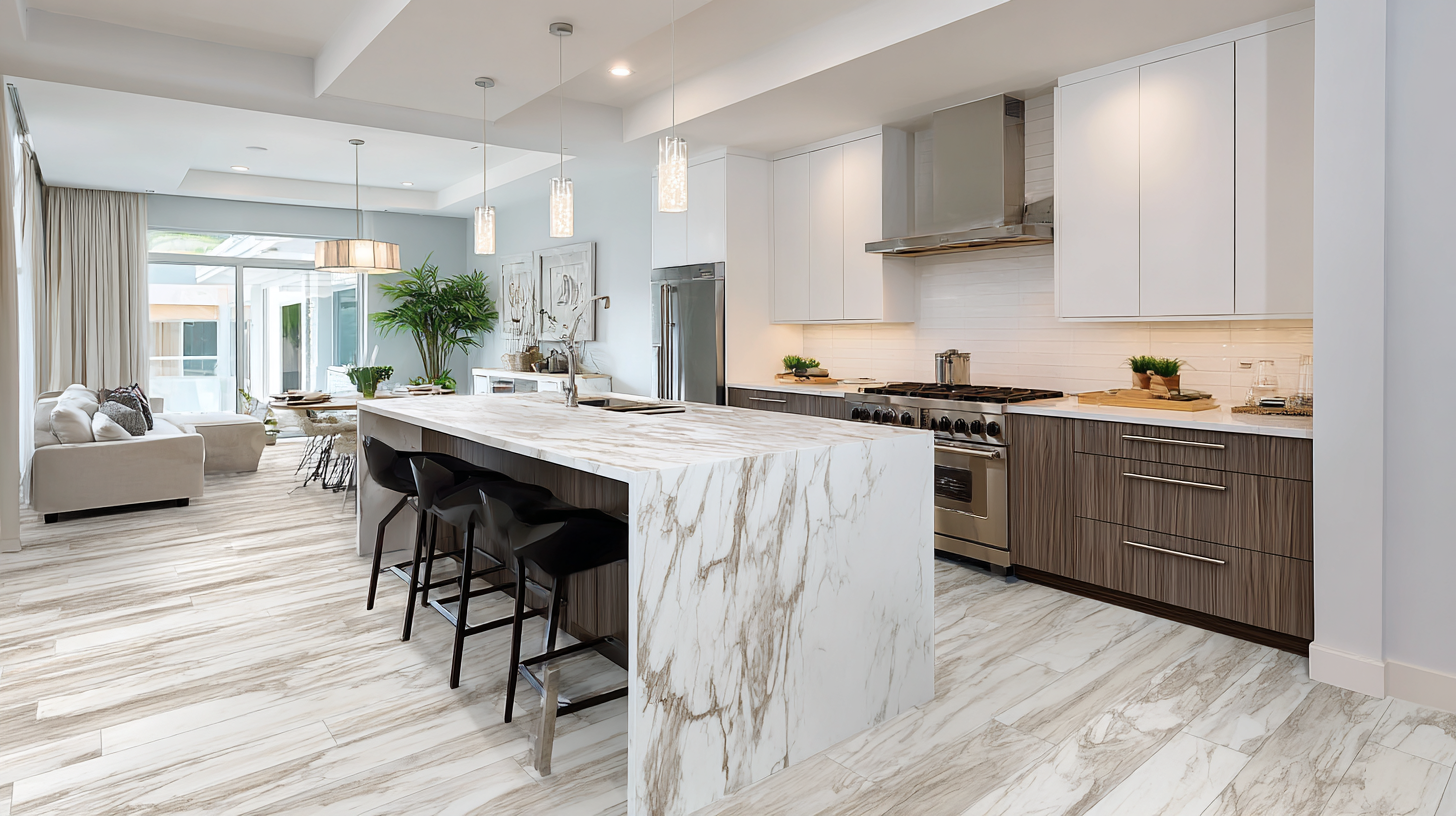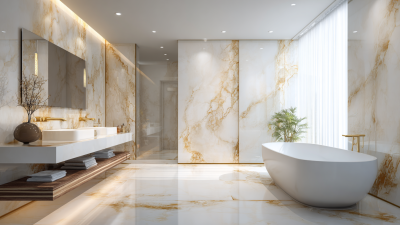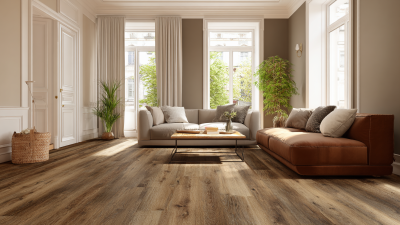When embarking on a kitchen renovation, selecting the right flooring is crucial, and Kitchen SPC Flooring has emerged as a leading choice for homeowners and designers alike. According to a recent report by MarketsandMarkets, the global SPC flooring market is projected to reach $6.25 billion by 2025, driven by its superior durability and aesthetic versatility. Kitchen SPC Flooring stands out for its water resistance, making it particularly suitable for high-moisture areas, which is a frequent concern for kitchen environments. In addition, the ease of installation and low maintenance requirements further enhance its appeal, allowing homeowners to achieve their dream kitchen without the stress often associated with remodeling projects. As the demand for sustainable and stylish flooring options grows, understanding how to choose the best Kitchen SPC Flooring becomes imperative for anyone looking to elevate their renovation experience.

 SPC flooring, or Stone Plastic Composite flooring, has gained popularity in modern kitchen renovations due to its impressive features and benefits. Made from a combination of limestone and PVC, SPC floors are designed for durability and resilience. These floors are 100% waterproof, making them an excellent choice for kitchens where spills are common. Furthermore, their rigid core structure provides stability, reducing the risk of warping or denting over time, even in high-traffic areas.
SPC flooring, or Stone Plastic Composite flooring, has gained popularity in modern kitchen renovations due to its impressive features and benefits. Made from a combination of limestone and PVC, SPC floors are designed for durability and resilience. These floors are 100% waterproof, making them an excellent choice for kitchens where spills are common. Furthermore, their rigid core structure provides stability, reducing the risk of warping or denting over time, even in high-traffic areas.
When considering SPC flooring for your kitchen, keep these tips in mind: choose planks with a textured surface for added safety, as they provide better traction. Additionally, opt for a thicker wear layer for improved scratch resistance, especially if you have pets. It’s also essential to select designs that complement your kitchen’s overall aesthetic, as SPC flooring comes in a variety of styles, from rustic wood looks to modern stone designs.
Another advantage of SPC flooring is its easy installation process. Many options feature a click-lock system that allows for a DIY approach, saving you labor costs. Ensure that the subfloor is clean and level for the best results. This versatility and user-friendliness make SPC flooring an ideal choice for your dream kitchen renovation.
When choosing SPC (Stone Plastic Composite) flooring for your kitchen renovation, it's essential to understand the different types available to find the perfect fit for your style and needs. SPC flooring typically comes in two main types: rigid core and flexible core. Rigid core SPC flooring is designed for high-traffic areas, offering superior stability, durability, and resistance to moisture. This makes it an ideal choice for kitchens, where spills and heavy foot traffic are common.
On the other hand, flexible core SPC flooring provides a softer feel underfoot and can be more comfortable for extensive standing periods. This type is suitable for those who prioritize comfort in their kitchen spaces. Additionally, both types come in a variety of designs, textures, and colors, allowing homeowners to achieve their desired aesthetic. Understanding these differences will help you make an informed decision on the SPC flooring that will best serve your kitchen needs while enhancing the overall look of your renovation project.
| Type of SPC Flooring | Thickness (mm) | Water Resistance | Durability Rating (AC) | Installation Method |
|---|---|---|---|---|
| Rigid Core SPC | 4-6 mm | Excellent | AC4 | Click Lock |
| Flexible SPC | 5-8 mm | Good | AC3 | Glue Down |
| High Gloss SPC | 4-7 mm | Water Resistant | AC5 | Click Lock |
| Wood Look SPC | 5-9 mm | Excellent | AC4 | Glue Down |
When choosing the right SPC (Stone Plastic Composite) flooring for your kitchen, it's essential to consider several factors to achieve the ideal balance of style and functionality. First, evaluate the durability of the flooring, especially in high-traffic areas like the kitchen, where spills and heavy use are common. Opt for SPC flooring with a thick wear layer, which provides better resistance against scratches, dents, and stains.
Next, think about the aesthetic appeal of the flooring. SPC flooring offers a wide variety of colors and patterns that can complement your kitchen's design. Whether you prefer a classic wood look or a modern tile finish, selecting a style that enhances your kitchen's overall ambiance is crucial. Additionally, consider the flooring's texture and finish, as these can influence both the visual appeal and safety underfoot, particularly in an area prone to water exposure. By combining durability with style, you can select SPC flooring that not only meets your practical needs but also elevates your kitchen's design.
When it comes to installing SPC (Stone Plastic Composite) flooring in your kitchen, proper preparation and technique are essential for a successful renovation. According to a report by the National Association of Home Builders, over 60% of homeowners are focusing on durable and low-maintenance materials for kitchen renovations, making SPC an increasingly popular choice. This innovative flooring material offers outstanding resistance to moisture and scratches, making it ideal for high-traffic areas like the kitchen.
Before installation, ensure that your subfloor is clean, dry, and level. It’s recommended to acclimate the SPC planks to the room temperature by leaving them in the space for at least 48 hours. This helps minimize expansion or contraction post-installation. Additionally, utilizing a quality underlayment can enhance sound insulation, further contributing to a pleasant kitchen environment. According to industry experts, this practice can reduce sound transmission by up to 20 decibels, making your cooking and dining experiences much more enjoyable. By following these installation tips, you can ensure a beautifully finished kitchen that stands the test of time.
When it comes to maintaining SPC flooring, regular care is essential to preserve its appearance and longevity. SPC flooring, known for its superior durability, requires routine cleaning to prevent dirt and grime buildup. A simple routine of sweeping or vacuuming followed by damp mopping with a mild cleaner can keep floors looking pristine. Research indicates that proper maintenance can extend the lifespan of SPC flooring by 5-10 years, making it a worthwhile investment for homeowners.
Moreover, avoiding abrasive cleaners and heavy scrubbing tools can prevent surface scratches. According to industry reports, over 70% of consumers consider ease of maintenance crucial when choosing flooring. This aligns with recent observations from manufacturers who note an increase in consumer preference for hard surface flooring options due to their resilience and low maintenance demands. By adhering to these care instructions, homeowners can ensure their SPC floors retain their stunning aesthetic for years to come, transforming their kitchen into a vibrant and functional space.







